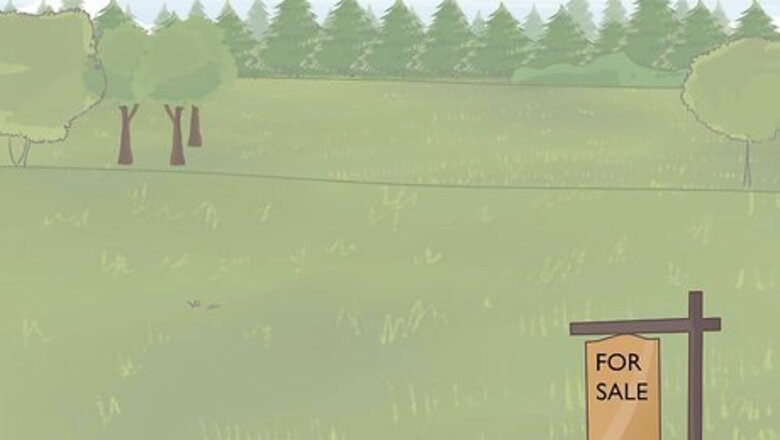
views
Designing the RV Park
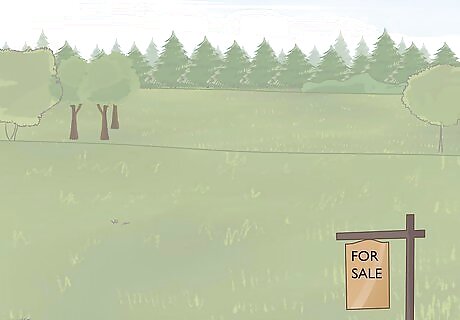
Look for a plot of land that’s at least 3 acres (1.2 ha). Try to find a spot that’s private and away from noisy roads or highways so you can create a relaxing experience for your campers. Look for an area that has other attractions nearby, such as hiking trails, lakes, or beaches, since they may attract more campers. Make sure the plot has level ground throughout, or else you’ll need to have it flattened. The minimum required size of an RV park depends on where you live. Check your area’s building or zoning codes to find out the requirements or regulations you need to follow. Make sure your park isn’t too difficult to get to or out of the way since some campers will only need to stay for 1 night at a time.
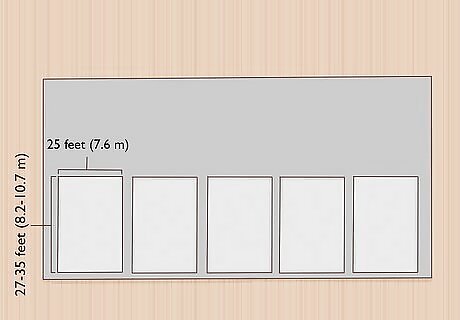
Divide the land into sites that are at least 1,500 sq ft (140 m). Basic RV campsites are usually at least 25 feet (7.6 m) wide and about 27–35 feet (8.2–10.7 m) long so RVs can easily fit in them. Start laying out where you want to place the sites on a map or blueprint of your land. The number of campsites you can put in your RV park depends on the shape and layout of the land you purchased. It usually costs around $15,000–20,000 USD per campsite to build an RV park. Opt to have a few sites that are around 50–60 feet (15–18 m) long so you can accommodate extra-long RVs or big rigs.
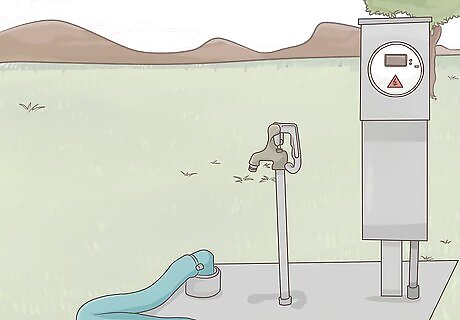
Have water, sewer, and electric hookups run to each campsite. Campsites that hook up to water, sewage, and electricity make it much more comfortable for your guests. Plan to place the hookups on the same side of the campsite as the RV’s rear driver side so they can attach to the lines easily. Have professional plumbers and electricians run supply lines to each of your campsites to ensure it’s done correctly and efficiently. RVs usually need an electrical line that runs 220–240V.
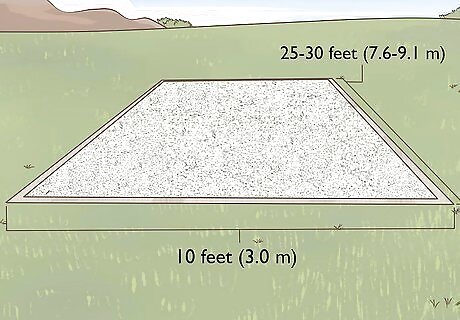
Install concrete or gravel pads to provide level areas for parking. The concrete or gravel pad ensures that RVs are parked on level ground. Make sure the pads are at least 10 feet (3.0 m) wide and about 25–30 feet (7.6–9.1 m) long so they can hold an entire RV. Have someone pour concrete or pack the gravel down for you on each site. Avoid using dirt since it can easily get muddy and make RVs get dirty.
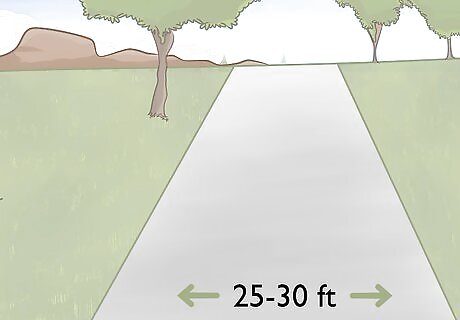
Design roads that are 25–30 ft (7.6–9.1 m) wide to improve the flow of traffic. Make sure the roads are wide so you can accommodate for larger vehicles. Aim to use asphalt, concrete, or packed gravel for your roads so they stay clean and easy to drive on. Make sure the roads allow campers to access each of the campsites without any hassle or concern. Try using one-way roads so you can easily direct the flow of traffic without it getting too congested. Reach out to other RV park designers to help you if you don’t know how to design the roads or sites yourself.Tip: Add pull-through campsites so campers can drive in and leave without having to back in if you want to make their experience more convenient.

Provide sanitary facilities if campers don’t want to use hookups. Find a location on your land where you can put a public bathroom and showers so campers have the option to use them. Aim to have 1–2 separate bathroom buildings and place them in a central location to make them easier to access. Make sure your park also has sewer or septic tank access where they RVers can empty their wastewater. You may also want to include laundry machines near your sanitary facilities since you’ll already have plumbing in the area.
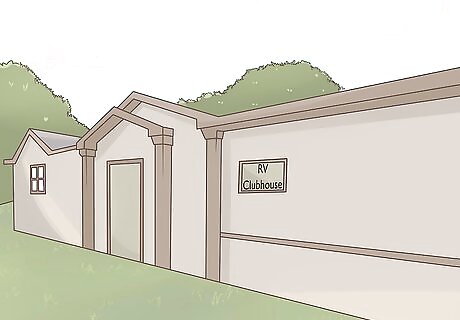
Provide a clubhouse if you want to create a friendly gathering space. Many RV parks have a small clubhouse area with tables, books, or full kitchens where RVers can socialize and get out of their vehicle. Place the building in a central location in your RV park so all of the campsites can easily access it. If you want to make the RV park family-friendly, have a restaurant or diner. If you want something for an adult group, consider putting in a bar.
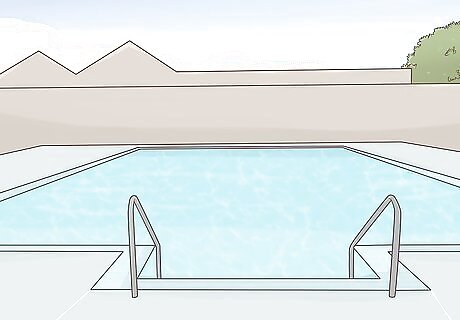
Have a pool or fitness center installed to make your park more desirable. Many high-end RV parks offer extra amenities for their guests to help them have the best stay. Choose a place in your RV park where every site can easily access your pool or fitness center. If you choose to provide a fitness center, pick a variety of equipment so your guests have options to choose from. If you choose a pool, make sure there are various depths to so people can have fun swimming or wading. You don’t need to have a pool or fitness center if you don’t want one in your park.
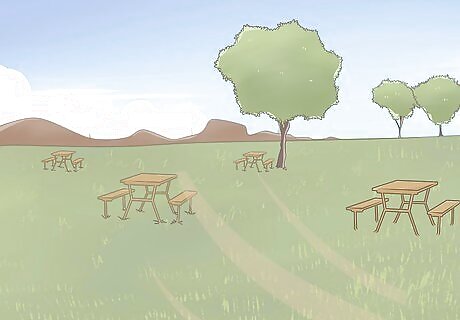
Save 10% of your land to leave as open space. Open green space is a great way to make your guests feel comfortable and relaxed while they stay at your park. Use the open area to make a park, playground, or comfortable area where your guests can go spend time outside of their RVs. Try to spread the open spaces throughout the park so all of your guests can easily reach them. You can change what you include in the open space depending on the guests you want to attract. If you want something more family-friendly, try putting in a playground. If you want something for a more adult group, you may include things like a putting green or nature trail.
Managing Your Park

Hire friendly staff to maintain the sites and amenities. Find someone with good organizational skills and customer service to assist guests with making reservations and checking in. Hire 1–2 groundskeepers to mow lawns, maintain campsites, and clean any other facilities. Try to keep a plumber or electrician that stays on-site to help with any hookup problems or concerns as well. Make sure everyone working at your park follows the same procedures and levels of customer service so campers are more likely to stay there. As your business grows, you may need to hire more staff to accommodate new customers.
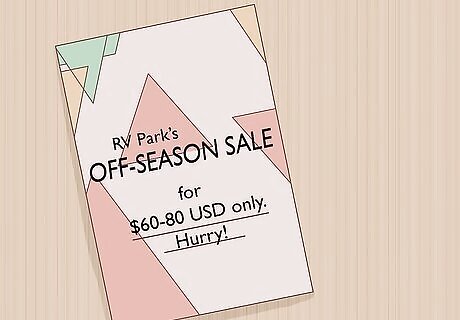
Adjust your park’s prices depending on the peak season and off-season. Every location has a peak season, which tends to be during the summer months, and an off-season, which usually happens in the winter. Charge more during your peak seasons when you have the most business and less in the off-season since there won’t be as much competition for sites. Just be sure to charge enough so you can still make a profit from your guests. Daily RV park prices usually range from $90–120 USD during peak seasons and $60–80 USD for off-seasons. If you have consistent business throughout the year, you may not need to adjust your prices.
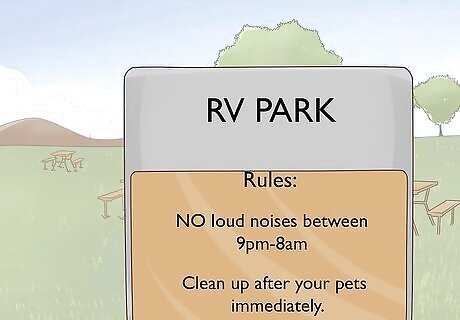
Post the park’s rules clearly so your guests can easily find them. Provide brochures or handouts during check-in so your guests can easily see the rules right when they arrive at your park. Put signs throughout your park in common areas and at regular intervals between campsites as reminders for your guests. Make sure you or your staff enforce the rules if someone breaks them. Some example rules could be, “No loud noises between 9 PM–8 AM,” or, “Clean up after your pets immediately.” Don’t post your rules too often around your park since they could seem too uptight.
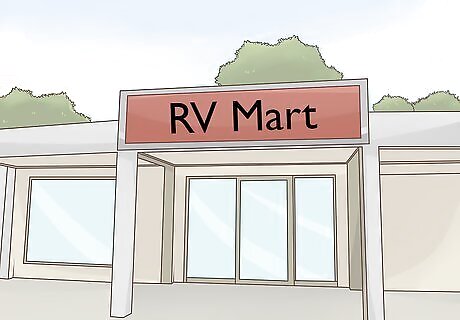
Open a market to sell common necessities to your guests. Since RVers spend a lot of time on the road, they may need to get more supplies when they stop at your park. Sell items such as kitchen supplies, emergency kits, toilet paper, and jumper cables so your guests can pick them up as they need them. If you want to help spread the word about your park, you can also sell things like T-shirts or bags with your park name on them as well. Plan how much inventory you buy based on how many guests usually stay in your park. That way, you won’t have extra items that are difficult to sell.
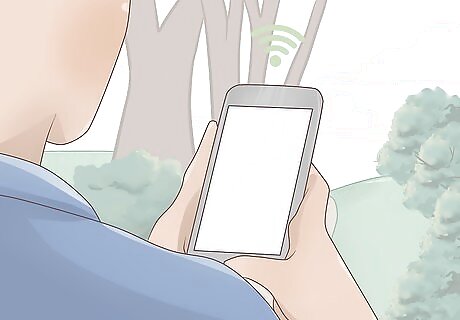
Provide wifi for your guests to make your RV park more attractive. Many RVers want to connect to the Internet when they settle down for the night, so set up a wireless network you can use throughout the park. Test the connection from all of the campsites to make sure it’s consistent throughout. Talk to an Internet provider or technician if you don’t know how to set up the wifi system yourself. If the wifi doesn’t reach every campsite, you may be able to list the sites that don’t connect to the Internet for a cheaper rate.Tip: If you aren’t able to set up wifi, try setting up a computer room with a high-speed connection so guests can still get on the Internet if they need to.

Ask for visitor feedback to see what you can improve on. Have comment cards or an area where your guests can write about their stay. Tell them to rate their stay and leave a note on what they did or did not like about the park. Take each of the comments seriously and try to address any concerns that people had so you can improve your RV park. For example, you may ask, “What did you enjoy about your stay?” or, “Are there any things that we could improve on?”
Marketing Your Location
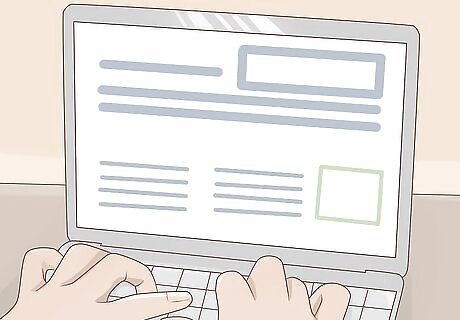
Create a website for your RV park so people can easily find it. Post all of your park’s information online, such as your rates, amenities, and site sizes, so campers can easily determine if they want to stay there. Include maps and pictures as well to give your potential customers an idea of what to expect. Make sure there’s a section for contact information and reservations as well. You may also list sites and attractions that are close to the RV park as more incentive for guests to stay with you. Look at other RV park websites so you can get an idea of how to lay out your site.
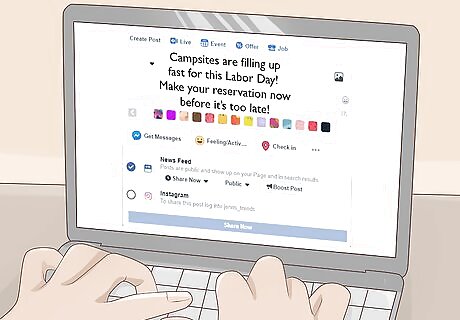
Make social media pages to promote your park. Post regularly on sites like Facebook, Twitter, or YouTube to show off your park and talk about any deals or specials. Try to get the community involved by asking questions, having contests, or running polls if you want to seem more personable. Respond to any questions or comments people leave and encourage them to visit. For example, you may write a post that says, “Campsites are filling up fast for this Labor Day! Make your reservation now before it’s too late!” You can also include a picture or link to your park’s website.
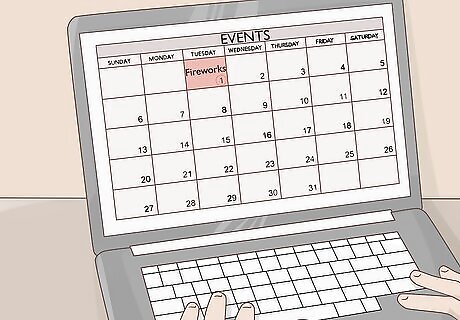
Plan special events on holidays to attract more campers. Big events are a great way to get the community involved at your park and bring in new business. For example, you may have a fireworks show on Independence Day or offer a Halloween costume party with a movie afterward. Try to plan events for every major holiday where you expect guests and promote them on your website. You can also plan smaller events on regular weekends, such as movie screenings or picnics to increase your park's attendance.

List your park in a campground directory to reach more people. Campground directories are online and print publications that campers can access to find places to stay in the area. Submit your RV park’s information, which should include your rates, campsite sizes, number of sites, and amenities, to the directory online. Once you submit and the directory approves you, potential customers will see your park listed for your area.Tip: Reach out to your area’s visitor center to see if they will carry brochures or handouts for your park. That way, people coming from out of town will easily be able to find it.
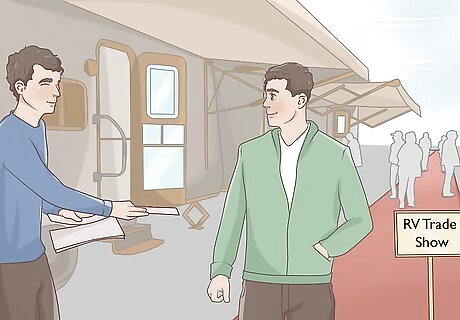
Attend RV trade shows and events near you to promote your business. Look into any trade shows that specialize in RVing and set up a booth space for your park. Bring brochures, contact information, and pictures of your RV park so people at the event can see what it has to offer. Network with people at the event so you can make connections with RVers and dealerships so they’re more likely to remember your park when they’re looking for places to stay. You may need to purchase booth space at the event.
















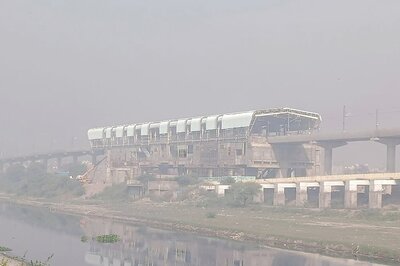

Comments
0 comment